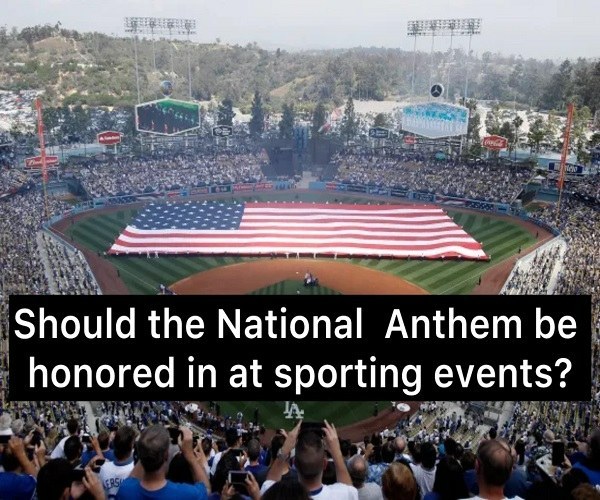The tradition of playing the national anthem before sporting events in the United States has deep roots that trace back to the end of World War I. Originally seen as a powerful display of patriotism and a unifying force, the practice began to take hold, particularly at baseball games. The idea was simple yet profound: bringing tens of thousands of people together under the American flag, united in a shared sense of national pride.

The Anthem’s Early Days: World War I and Beyond
The playing of the national anthem at public events didn’t immediately become a widespread custom after World War I. However, it did serve as a potent symbol of unity during a time when the nation was healing from the war’s devastation. While the anthem was not played at every event, its presence was felt, especially in large gatherings where patriotism was on full display.
A Resurgence During World War II
The tradition of playing the national anthem gained significant momentum during World War II. At a time when the country was once again engulfed in conflict, the anthem became an even more integral part of public life. It was played not just at sporting events but also before movies, theater performances, and other public gatherings. The anthem served as a reminder of the shared sacrifices being made by Americans, both on the battlefield and at home.
Cementing the Tradition: The Vietnam War Era
By the time the Vietnam War rolled around, the playing of the national anthem had become a staple at sporting events, particularly in baseball, which is often referred to as America’s pastime. Despite the controversy and division surrounding the Vietnam War, the anthem remained a constant, a thread that connected the American public through a complex and challenging time. It became a ritual, a moment for reflection and respect before the excitement of the game began.
The US Stands Alone in Its Tradition
Today, the United States is almost unique in its practice of playing the national anthem before domestic sporting events. In most other countries, national anthems are reserved for international competitions where teams represent their nations on a global stage. This distinction has led to varied opinions on the practice in the U.S.
Diverse Perspectives on the Anthem Tradition
Opinions on playing the national anthem before sporting events are as varied as the American public itself. For some, it’s seen as a deeply political act, a form of indoctrination that ties patriotism to national symbols in a way that feels compulsory. For others, it’s a genuine expression of patriotism, a way to honor the flag, the country, and the ideals they represent.
There’s also a segment of the population that views this tradition as a form of superficial patriotism—arguing that true patriotism goes beyond just standing for the anthem or waving the flag. These individuals believe that meaningful patriotism involves active participation in civic life and a deeper understanding of the nation’s values and challenges.
On the other hand, many see the anthem as a moment of respect, particularly for those who have served in the military or as civil servants, risking their lives to protect and serve the country. For these individuals, the anthem is a powerful reminder of the sacrifices made by others for the freedoms and safety that Americans enjoy today.
Conclusion: A Tradition That Continues to Evolve
The playing of the national anthem before sporting events is a tradition that has evolved over the past century, shaped by the country’s history and the diverse views of its citizens. Whether seen as a symbol of unity, a political statement, or a simple act of respect, the anthem remains a fixture in American culture. As the nation continues to grow and change, this tradition will likely continue to spark debate, reflecting the complex and dynamic nature of American patriotism.





